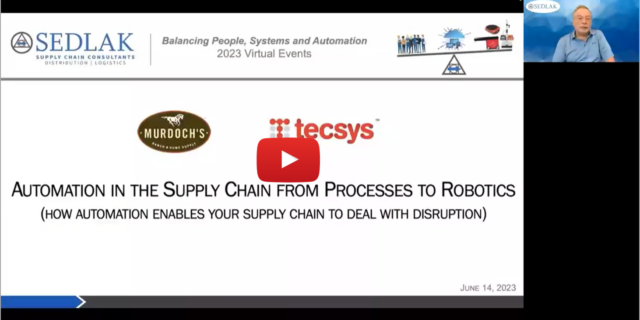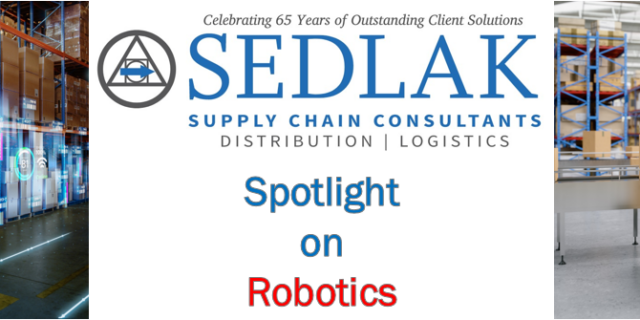Consolidated Services Centers – Before You Take the Plunge (Part 2 of 2)
October 2, 2017 By: Senior Management | Topics: Facility & Operation Design, HealthcareIn Part 1 of this series, I introduced the concept of consolidated distribution or a Consolidated Services Center (CSC) as a potential way to reduce costs in a healthcare organization’s supply chain. However, there are many critical questions that should be answered before making this multi-million dollar decision, and our panel of experts chimed in with their thoughts in the previous post on questions related to organizational structure and the underlying reasons for wanting to consider consolidated distribution.
Part 2 of this series continues our list of questions, this time delving into the levels and areas of expertise required to effectively execute a CSC and planning considerations needed to meet organizational objectives.
Our industry experts: Jay Mitzel, retired supply chain executive formerly at TriHealth and Summa Health; Jim Francis, Chair of Supply Chain Management at Mayo Clinic; John Gaida of SVP of Supply Chain Management at Texas Health Resources; Bill Mosser VP of Materials Management at Franciscan Missionaries of Our Lady Health System, Bob Simpson, President and CEO of LeeSar; and Charlie Miceli VP Supply Chain and IS Operations at the University of Vermont Health Network.
Part 2: Expertise and Objectives
Do you have the expertise and business acumen to make consolidation a core competency?
This requires honest self-reflection.
Jim Francis: Do you have the subject matter experts to run a CSC with the efficiency and cost effectiveness that a national distributor or 3PL can? Would other healthcare organizations buy distribution services from you?
Bob Simpson: If you decide to “self-anything” you must be prepared to achieve unparalleled service levels. In other words, service levels have to be perfect. Surround yourself with a senior staff that knows what it is doing. It is very unlikely that you can simply “repurpose” existing personnel to the new roles required for a centralized operation. Few acute care SC folks have ever had experience in such a setting. You need expertise and expertise costs money.
Bill Mosser: If you outsource operation of a CSC to a third-party logistics provider, establishing an effective onboarding process and direct connection to manufacturers is critical to align partnering goals beyond sales, streamline P2P and e-commerce, identify mutual benefits and waste beyond product sales, and establish service levels and metrics.
Can you drive SKU reduction and remove variation?
Ed Hisscock: Think beyond MedSurg products. Simply disintermediating your MedSurg distributor will not drive a significant ROI. Accurate expression of demand will be a key success factor. Ensure that you have sound point of use systems/processes and comprehensive span of inventory control.
Bill Mosser: We let our clinicians determine what is used, and an internal clinical value analysis team drives standardization across the continuum of care. We streamline all products to be processed through our 3PL operator team to monitor compliance, strategically source products, align with P2P, and ensure track/trace and data standards requirements are met. This arrangement supports more disciplined processes for new product assessment and a structured timeline for introducing substitutions.
Is this a sustainable business venture?
Jim Francis: My belief is that it is a hard model to replicate given the years of experience (Cardinal, McKesson, Owens & Minor, etc.) have experienced fine-tuning a low margin business. We have a mixed distribution model with a primary distributor that also does LUM/JIT to some of our locations. The primary reason we have a distribution center is our main location is in Rochester, Minnesota and it is there for inventory management reasons/disaster and business continuity, not that we are experts in running a distribution center.
John Gaida: Essentially there needs to be quite a bit of volume to make these decisions logical and cost effective – my guess most health systems can’t make the math work.
What are your current and expected (10-year horizon) costs for the services you hope to centralize?
Conduct a detailed audit with your finance department and include everyone you can in the analysis. Many people conduct cursory analyses, as was done with the laundry situation mentioned in the previous post. You must conduct exhaustive analyses of your current costs to develop an accurate baseline against which everything else will be measured.
Charlie Miceli: Consider: (1) the scale of the spend and the opportunity, (2) labor and real estate costs (what is overhead), (3) regulatory and governmental issues and/or incentives and (4), the current total cost of the supply chain process. Be painstaking and thorough.
What do you expect the costs of your proposed solution to be over those same 10 years?
Engage an expert to walk you through the proposed options and their costs. This is where you should seek out the experience of folks who have done this before, as well as certified industry/discipline experts in the areas you are looking to centralize. It is much better to spend a little money to discover that doing something is a bad idea, than discover it was a bad idea after you have committed to it. Ask to “see the homework” of others who have done what you intend to do.
Do you have support from your key stakeholders (senior leadership, members and suppliers)?
Bob Simpson: If you are going to centralize anything, you need commitment—from the C-suite, from the suppliers from the customers and from your staff. And you had better make certain to keep your staff’s morale up by supporting them because this isn’t easy work.
Jay Mitzel: It was only because of the support we had from senior leadership that we were able to succeed. Key customers feared loss of service levels and even though we brought the operation up a month early without telling anyone, the customers were still skeptical.
Bonus Question: Who’s going to measure the results?
One of the oldest saws is, “Figures don’t lie, but liars figure.” Whether you decide to go forward or wait, it is Imperative that you measure results against both actual activity as well as against your projections. There will come a time in the future when your decision will be revisited, and you don’t want to start over every time.
Read the previous post in this series.
Sedlak’s healthcare solutions help providers, distributors, and suppliers optimize supply chain operations, balance cost-service trade-offs, and pursue intelligent growth strategies. Our expertise across industries enables us to add value quickly and enable clients to meet the shifting challenges of the healthcare industry. To learn more, fill out the Contact Us form below.







